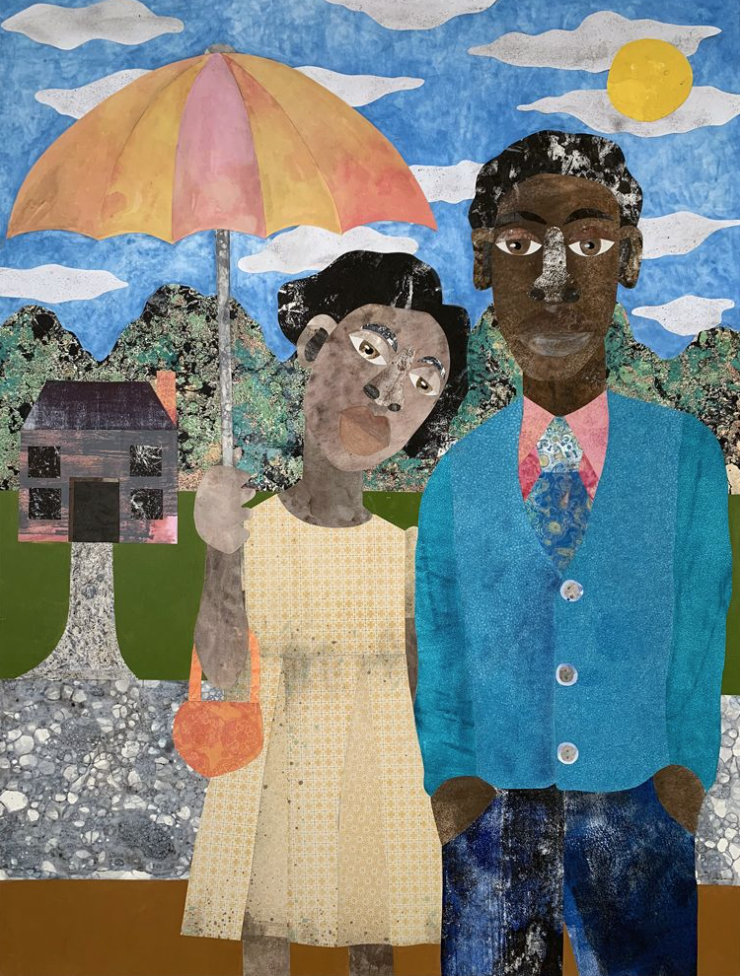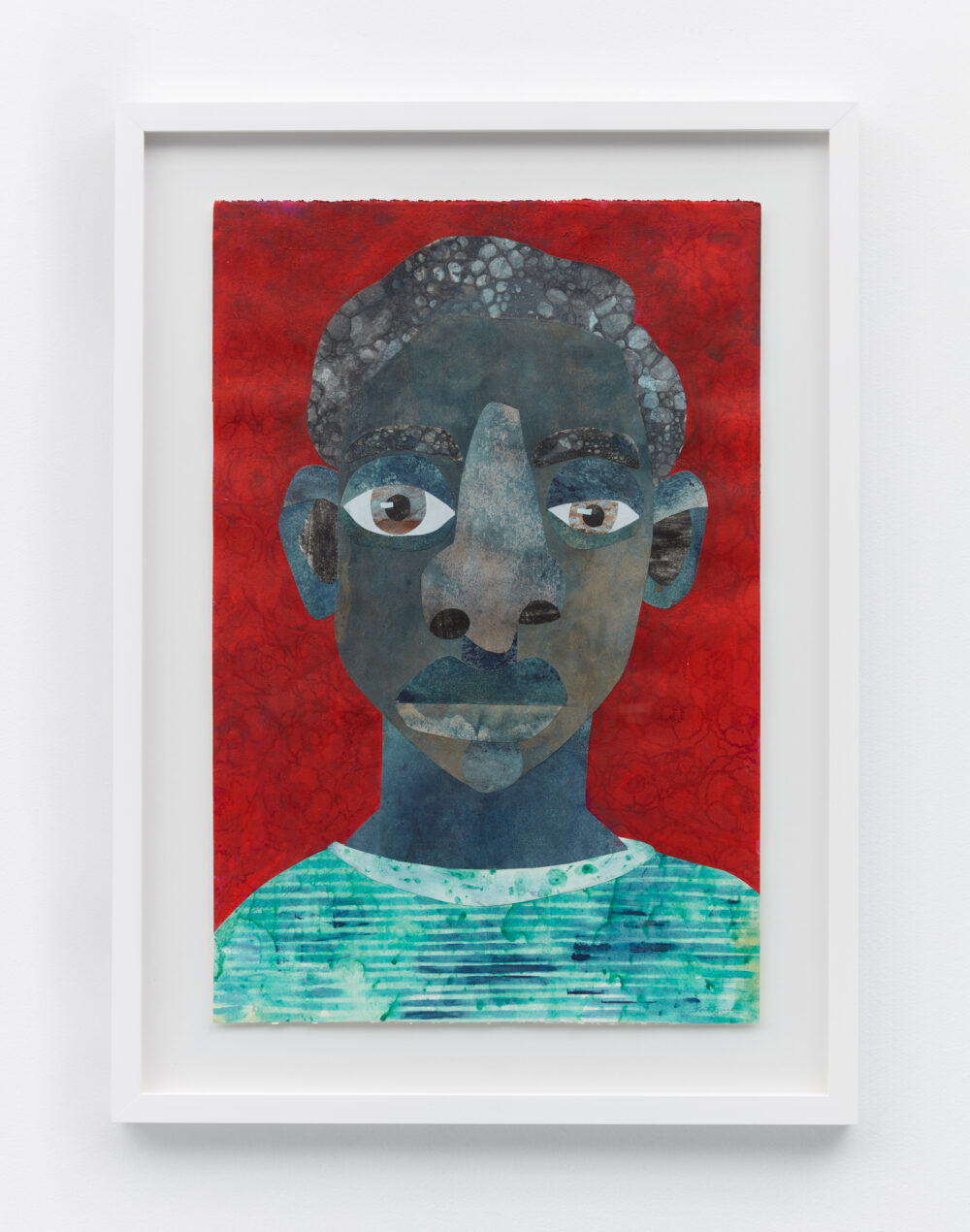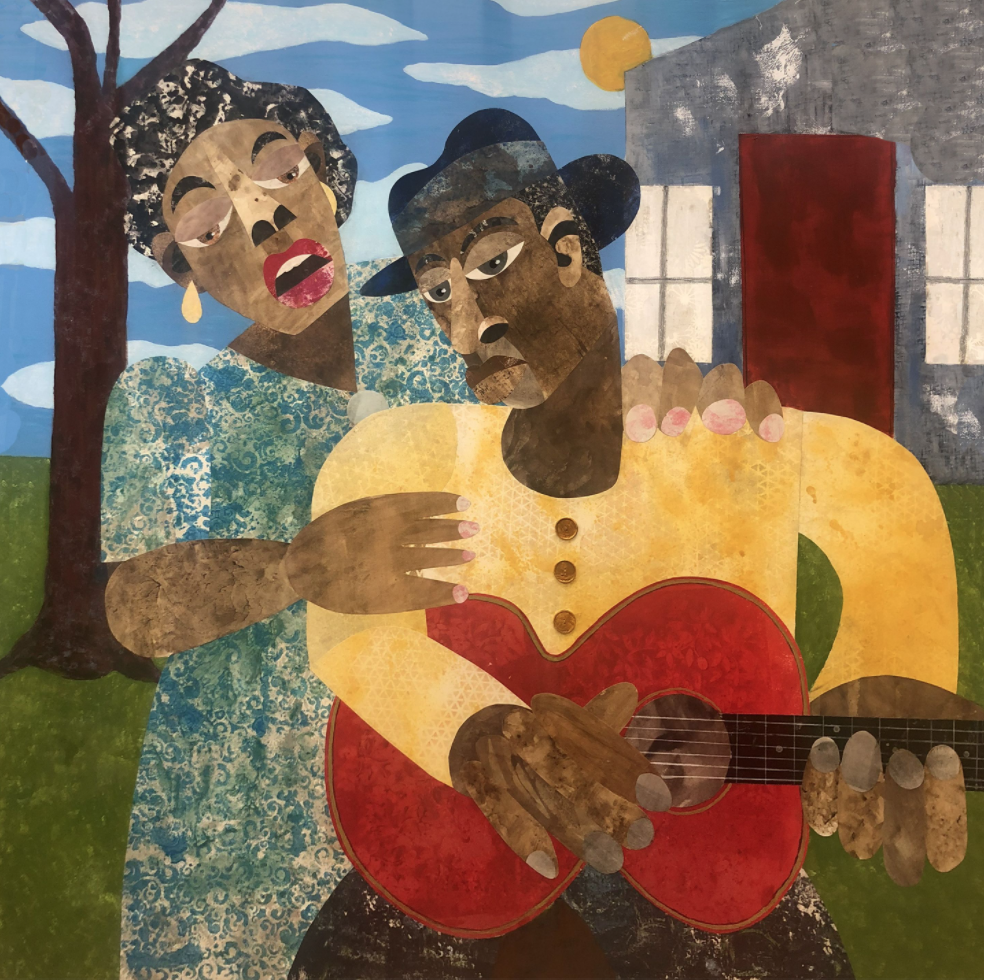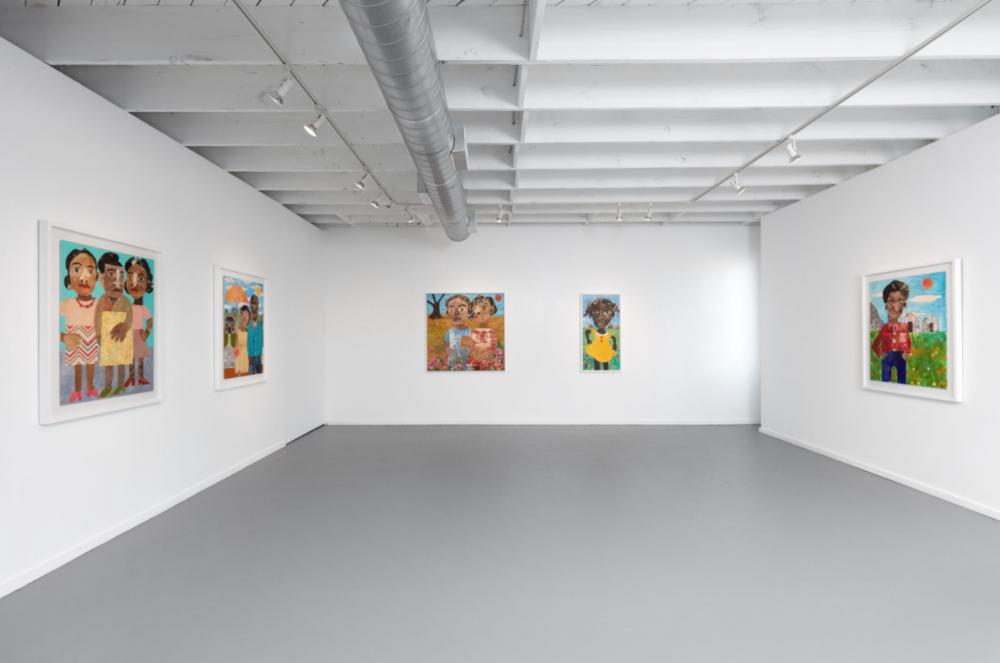As the planet enters the beginning of a post-pandemic, post-Trump administration era, it was wonderful to be baptized in optimism from Evita Tezeno’s exhibition, “Better Days” at the Luis De Jesus Los Angeles gallery. One sweeping taste of these works results in a single message: Tezeno’s unique voice reflects a masterful synthesis of several groundbreaking aesthetic approaches that pay tribute to Black culture in her use of acrylic mixed-media collage on rag paper.

Evita Tezeno, On A Sunny Day, (2020). Acrylic and mixed media collage on ragboard, 40″ x 30.” Image courtesy of Luis De Jesus Los Angeles.
On a Sunny Day (2020) is exactly what the title infers with a couple placed off-center, mirroring the intentional folk painting style of William H. Johnson’s Café (1939-1940). Both stand together joyfully gazing directly at the viewer in front of a gray-rocked paved trail leading to a home. Depicting this sistah holding an orange, analogous schemed umbrella with head tilted toward her man’s sky-blue suit, coat–covered shoulder honors Black companionship. Two lovers are allies, partners and friends; they have each other’s back. Painting melanin skin-tone hues with a background of sunshine on a cloudy day suggests such songs as “Lean on Me” (1972) by Bill Withers and “I Can See Clearly Now” (1972) by Johnny Nash.

Evita Tezeno, I Know Who I Am, (2021). I Am A Black Man. Acrylic and mixed media collage on rag paper, 22″ x 15.” Image courtesy of Luis De Jesus Los Angeles.
The series, six portraits titled, I am a Black Man (2021) depicts the eyes of young brothas shouting confidence like the School of AFRICOBRA (African Commune of Bad Relevant Artists) whose approach to art-making included portraying frontal images inspired by African sculpture in which works unapologetically reflected dignity, directness and strength. Tezeno’s portraits challenge the white gaze that warps Blackness into a distorted, circus mirror reflection. No one is looking down in fear or nervously shifting eye contact to the side in these images. With folk-style rendered, African facial features, and a range of painted skin tones from Hershey chocolate to wheat bread brown, these future leaders stare with a sense of living in the presence of a hopeful future.

Evita Tezeno, Downhearted Blues, (2021). Acrylic and mixed media collage on canvas
48″ x 48.” Image courtesy of Luis De Jesus Los Angeles.
Downhearted Blues (2021) is circular in composition. A man sports a lemon-yellow stencil crosshatched–patterned shirt playing a rose-red guitar with a woman singing adorned in an ocean-blue stenciled, spirograph–patterned dress. She is at her man’s side holding him. Expressing tenderness in hands places Evita Tezeno in that rare category of artists who embraced rendering hands with proficient, proportional mastery like Elizabeth Catlett and Charles White. Additionally, her collage style combined with the simplicity of drawn hands points to Romare Bearden’s, Three Folk Musicians (1967). Here, Tezeno selects from the collection of buttons that she inherited from her grandmother who was a seamstress. Penny-copper hue, generational mementos are attached to the guitar player’s shirt. Such symbolic appropriation commemorating womanhood and the profession of her grandmother correlates also to themes of such Catlett sculptural works as Sister (1971), The Black Woman Speaks (1970), and the linocut, Harriet Tubman (1953-54).
Ultimately, “Better Days” plants certainty of a bright future. In fact, these works by Evita Tezeno invite viewers to sow hope while singing Bill Withers’ “Lovely Day” (1977).
Evita Tezeno “Better Days”
Luis De Jesus Los Angeles Gallery
March 6 – April 17, 2021


